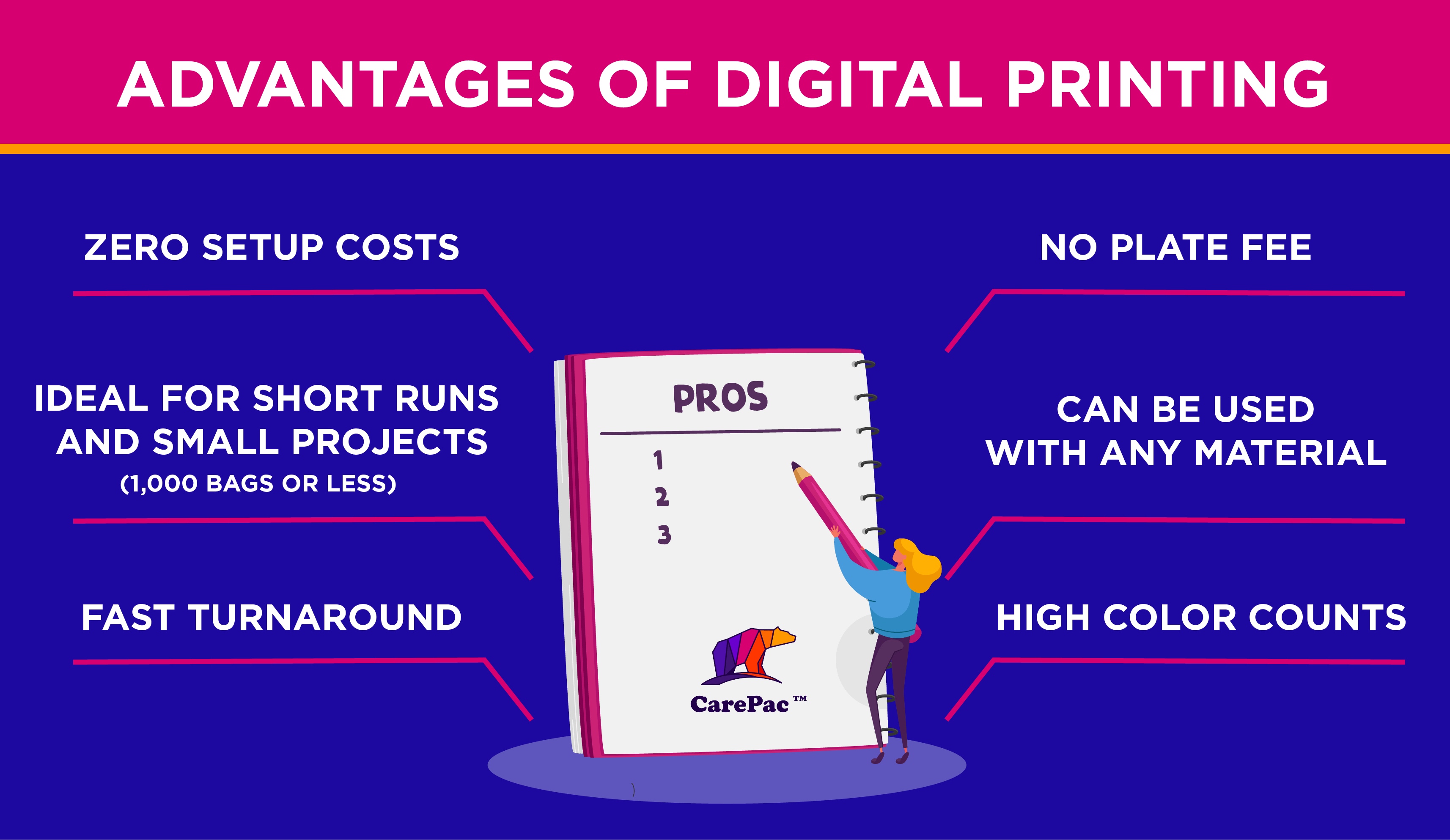Little Known Facts About Digital Printing.
Little Known Facts About Digital Printing.
Blog Article
Not known Facts About Digital Printing
Table of ContentsThe 10-Minute Rule for Digital PrintingThe Main Principles Of Digital Printing Digital Printing for BeginnersDigital Printing Fundamentals ExplainedHow Digital Printing can Save You Time, Stress, and Money.Some Known Factual Statements About Digital Printing
Variable information printing, such as direct mail with personalized codes and addresses, is preferably suited for digital printing. Digital quick printing only requires 4 actions of style, testimonial, printing and binding to get every little thing done. Digital quick printing has an unequaled advantage: print on demand.According to PMMI, digital printing allows brands and makers to react promptly to consumer demands while enhancing the supply chain, lowering warehousing price and waste, and delighting in faster time to market. That all audios wonderful, yet how does this technology do all that? The major differentiator of these modern technologies is that there are no set up charges and no plates with digital printing.
Some Known Questions About Digital Printing.
According to Wikipedia, the best distinction between electronic printing and traditional methods such as lithography, flexography, gravure, or letterpress - Digital Printing is that there is no requirement to change printing plates in digital printing, whereas in these analog printing techniques the plates are repetitively changed. This leads to quicker turnaround time and reduces expense when utilizing electronic printing.
Speedy production indicates obtaining your product to market faster. It additionally means it's easier and faster to make modifications later, when you change a recipe, include a SKU, or produce seasonal product packaging. Digital printing is extremely versatile, so it's easy to make modifications to the package style quickly. All of it returns to home plates.
With conventional printing approaches, short-run printing is just not feasible. Because a terrific design can make or damage your product, digital printing regularly creates top notch, clear and colorful graphics each time.
Digital printing is the process of printing digital-based images straight onto a selection of media substrates. There is no need for a printing plate, unlike with offset printing. Digital data such as PDFs or desktop computer posting documents can be sent directly to the digital printing machine to print theoretically, image paper, canvas, material, synthetics, cardstock and other substrates.
All About Digital Printing
According to PMMI, digital printing allows brand names and suppliers to react promptly to customer demands while boosting the supply chain, minimizing warehousing cost and waste, and enjoying faster time to market. That all noises fantastic, yet how does this innovation do all that? The significant differentiator of these technologies is that there are no set up fees and no plates with electronic printing.
According to Wikipedia, the greatest distinction between digital printing and typical methods such as lithography, flexography, gravure, or letterpress is that there is no requirement to replace printing plates in electronic printing, whereas in these analog printing techniques home plates are repetitively changed. This results in quicker turn-around time and reduces price when using digital look at these guys printing.

Fascination About Digital Printing
Extra inventory can indicate even more waste later on. With traditional printing techniques, short-run printing is just not possible. Since a great design can make or break your item, electronic printing continually develops top quality, clear and vibrant graphics each time. Digital printing on adaptable pouches includes the intense, lively, and specific graphics that almost beckon customers to connect and touch them.

According to PMMI, digital Website printing permits brands and manufacturers to react rapidly to customer needs while enhancing the supply chain, minimizing warehousing expense and waste, and delighting in faster time to market. That all sounds excellent, yet exactly how does this innovation do all that? The significant differentiator of these technologies is that there are no set-up fees and no plates with digital printing.
Getting The Digital Printing To Work
According to Wikipedia, the biggest difference between electronic printing and conventional approaches such as lithography, flexography, gravure, or letterpress is that there is no requirement to replace printing plates in electronic printing, whereas in these analog printing methods the plates are repetitively changed. This leads to quicker turnaround time and decreases expense when making use of electronic printing.
Digital printing is very adaptable, so it's very easy to make modifications to the bundle style swiftly. It all goes back to the plates.

Unknown Facts About Digital Printing
Digital printing is the procedure of printing digital-based images directly onto a variety of media substratums. There is no need for a printing plate, unlike with balanced out printing. Digital files such as PDFs or desktop publishing documents can be sent out directly to the electronic printing press to print on paper, image paper, canvas, material, synthetics, cardstock and other substrates.
Report this page